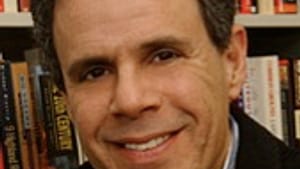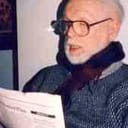Stay in the Loop
BSR publishes on a weekly schedule, with an email newsletter every Wednesday and Thursday morning. There’s no paywall, and subscribing is always free.
Everybody's doing it: On remembering your pasts
Ben Yagoda's "Memoir: A History'

Ben Yagoda, that funky journalism professor down in Newark, Delaware has hit a humanistic homerun with Memoir: A History. It melds a universal history of the genre while illuminating how it fared (and sometimes failed) throughout American history. No easy trick when Yagoda estimates that tens of thousands of such recollections followed Caesar's Commentaries some three millennia ago.
Julius put his description of the Gallic wars in the third person because he was reporting those battles back home to the Rome HQ. The French word for "memory" named the field "memoirs," which entered the Oxford English Dictionary in 1678. "Autobiography" didn't make the cut until 1809.
Gore Vidal made a crucial distinction in his cleverly entitled 1996 memoir, Palimpsest: "A memoir is how one remembers one's own life, while an autobiography is history, requiring research, dates, facts, double-checked."
And the American trend gets stronger all the time. When Bennett Cerf, co-founder of Random House in the 1920s, wrote his own memoir, At Random, he noted that "fiction outsold nonfiction four-to-one. Now (1960s) that ratio is absolutely reversed, and nonfiction outsells fiction four-to-one." Nielsen Book Scan notes that memoirs boomed 400% between 2004 and 2008. Why, that old Inkling John Grogan even expanded the genre with Morley and Me: Life with the World's Worst Dog. Now no pet is safe from such psychological exploitation.
"'For some strange reason'
It was not so when Saint Augustine triggered a religious revolution by confessing to his moral failings in public. Yagoda notes prefigurings of such religious experiences in both the Old and New Testaments. But it was a long jump to Rousseau's Confessions of 1759-60: "For some strange reason," Rousseau's publisher "had been urging me for some time to write my memoirs."
But Jean-Jacques was a far cry from the holy penitent Augustine. His obsessive masturbatory maneuvers turned off many of his semi-secularized, only partially Enlightened readers. It would take a while for Walt Whitman to make a metaphysic of his Songs of Myself.
Which reminded me of the great Basel exhibition a few seasons back of "Art of the Everyday." There the curators shrewdly revealed how we Euros slowly switched from images of Saints and saintly antecedents to an awareness of and then an affection for the miraculous ordinary.
As Blake enjoined us: To see the world in a grain of sand. Or Walt, who exulted, "The mouse is miracle enough to stagger sextillions of infidels." From the miracle of transubstantiation to the blessedness of orgasm. The memoir is there in all of its multifariousness to trace the transition.
Mark Twain's embargo
America played a major role in that transformation: from Ben Franklin's blessings on an "ordinary" life of common commerce to Mark Twain's humorous take on the newly egalitarian life. And both P.T. Barnum and Ulysses S. Grant added their special flavor to this newly expanded Panorama of Ego.
That reminds me that Twain's 100-year blackout of his autobiography finally expired this spring, as the apex of his centennial. He'll finally (perhaps) let us know what he really thought of his lady office manager who perhaps tried to seduce the new widower but surely did finagle his assets!
In the '30s the Frankfurt savant Leo Lowenthal (who almost turned me to a career in anthropology) quantified the subjects of Saturday Evening Post biographies and saw a clear transition from producers to entertainers. In the '60s I followed him in Journalism Quarterly by analyzing the subjects interviewed on TV by Edward R. Murrow and Mike Wallace. Almost all were entertainers.
The genre endures, but the focus shifts. We shall see what Facebook and Twitterology do to the memoir. Blogs, after all, are daily memoirs.
Absence of an index
My only gripe with Yagoda is his lack of a traditional index. Almost 600 names are cited in his "Index of Memoirists and Autobiographers." But "people only" is a hack of a guide, especially when the book's contents frequently cite useful humungous bibliographies and diverse examples.
Yagoda shows, for example, how the Puritan John Bunyan led to the novelist Daniel Defoe. I'd settle for 100 significant categories in the history of the genre. How does our media-saturated culture deal with this increasingly democratized genre? Do we understand each other more deeply and acutely? Or do we just skitter from one superficiality to another?
Julius put his description of the Gallic wars in the third person because he was reporting those battles back home to the Rome HQ. The French word for "memory" named the field "memoirs," which entered the Oxford English Dictionary in 1678. "Autobiography" didn't make the cut until 1809.
Gore Vidal made a crucial distinction in his cleverly entitled 1996 memoir, Palimpsest: "A memoir is how one remembers one's own life, while an autobiography is history, requiring research, dates, facts, double-checked."
And the American trend gets stronger all the time. When Bennett Cerf, co-founder of Random House in the 1920s, wrote his own memoir, At Random, he noted that "fiction outsold nonfiction four-to-one. Now (1960s) that ratio is absolutely reversed, and nonfiction outsells fiction four-to-one." Nielsen Book Scan notes that memoirs boomed 400% between 2004 and 2008. Why, that old Inkling John Grogan even expanded the genre with Morley and Me: Life with the World's Worst Dog. Now no pet is safe from such psychological exploitation.
"'For some strange reason'
It was not so when Saint Augustine triggered a religious revolution by confessing to his moral failings in public. Yagoda notes prefigurings of such religious experiences in both the Old and New Testaments. But it was a long jump to Rousseau's Confessions of 1759-60: "For some strange reason," Rousseau's publisher "had been urging me for some time to write my memoirs."
But Jean-Jacques was a far cry from the holy penitent Augustine. His obsessive masturbatory maneuvers turned off many of his semi-secularized, only partially Enlightened readers. It would take a while for Walt Whitman to make a metaphysic of his Songs of Myself.
Which reminded me of the great Basel exhibition a few seasons back of "Art of the Everyday." There the curators shrewdly revealed how we Euros slowly switched from images of Saints and saintly antecedents to an awareness of and then an affection for the miraculous ordinary.
As Blake enjoined us: To see the world in a grain of sand. Or Walt, who exulted, "The mouse is miracle enough to stagger sextillions of infidels." From the miracle of transubstantiation to the blessedness of orgasm. The memoir is there in all of its multifariousness to trace the transition.
Mark Twain's embargo
America played a major role in that transformation: from Ben Franklin's blessings on an "ordinary" life of common commerce to Mark Twain's humorous take on the newly egalitarian life. And both P.T. Barnum and Ulysses S. Grant added their special flavor to this newly expanded Panorama of Ego.
That reminds me that Twain's 100-year blackout of his autobiography finally expired this spring, as the apex of his centennial. He'll finally (perhaps) let us know what he really thought of his lady office manager who perhaps tried to seduce the new widower but surely did finagle his assets!
In the '30s the Frankfurt savant Leo Lowenthal (who almost turned me to a career in anthropology) quantified the subjects of Saturday Evening Post biographies and saw a clear transition from producers to entertainers. In the '60s I followed him in Journalism Quarterly by analyzing the subjects interviewed on TV by Edward R. Murrow and Mike Wallace. Almost all were entertainers.
The genre endures, but the focus shifts. We shall see what Facebook and Twitterology do to the memoir. Blogs, after all, are daily memoirs.
Absence of an index
My only gripe with Yagoda is his lack of a traditional index. Almost 600 names are cited in his "Index of Memoirists and Autobiographers." But "people only" is a hack of a guide, especially when the book's contents frequently cite useful humungous bibliographies and diverse examples.
Yagoda shows, for example, how the Puritan John Bunyan led to the novelist Daniel Defoe. I'd settle for 100 significant categories in the history of the genre. How does our media-saturated culture deal with this increasingly democratized genre? Do we understand each other more deeply and acutely? Or do we just skitter from one superficiality to another?
What, When, Where
Memoir: A History. By Ben Yagoda. Riverhead Books, 2009. 304 pages; $25.95. www.amazon.com.
Sign up for our newsletter
All of the week's new articles, all in one place. Sign up for the free weekly BSR newsletters, and don't miss a conversation.

 Patrick D. Hazard
Patrick D. Hazard